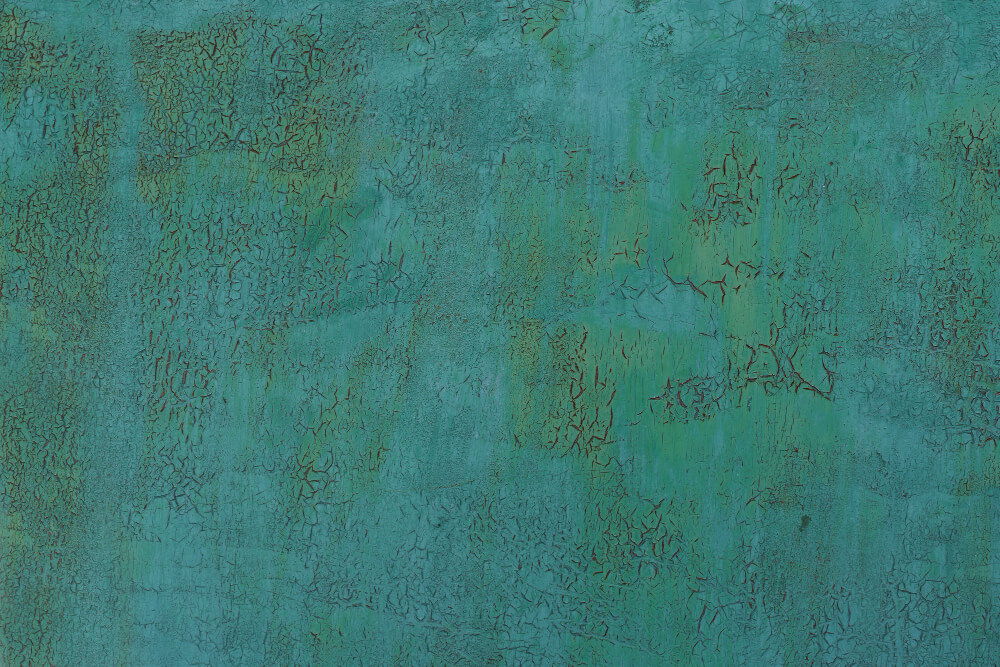Section 2: What is Verdigris, Really?
Think of verdigris as the metal’s version of a rust. It’s that green or bluish crust that forms on copper, brass, and bronze when they’re exposed to air and moisture over time. The buckles, zippers, and rivets on your leather item are the usual suspects. This isn’t just a surface spot; it’s a sign of active corrosion. If you don’t address it, the acidic nature of the verdigris can actually eat into the leather fibers beneath it, potentially causing a permanent stain or even weakening the material. This is why knowing the right way to clean verdigris off leather is so important you’re not just cleaning, you’re stopping the damage.
Section 3: The Golden Rule of Leather Care
When dealing with valuable or antique leather, your mantra should be: “First, do no harm.” In preservation terms, this is called “minimal effective intervention.” It means we use the gentlest method possible to solve the problem. No harsh scrubbing, no strong chemicals, and no rushing. Our goal is to remove the metal stain on the leather without altering its character or causing any new damage. By being patient and careful, you preserve the item’s soul and history, ensuring that your cleaning leather process protects its value for the long term.
Section 4: Should You Do This Yourself?
Before you start, it’s smart to ask if your leather item is a good candidate for a DIY clean. Take a close look. Is the leather itself already dry, cracked, or flaking? If the material is very fragile, adding any moisture could be risky. How about the stain? Is it on the surface, or has it sunk in deep? For a modern bag in good condition, this guide is perfect. But for a fragile, museum-quality antique, the safest choice might be to consult a professional leather restorer. It’s better to be safe and get an expert opinion than to risk damaging an irreplaceable piece.
Section 5: Your Gentle Cleaning Toolkit
You don’t need fancy products. The best tools for this job are simple and gentle. Here’s your shopping list for a safe leather cleaning solution:
-
Distilled Water (pure, with no minerals)
-
White Vinegar (a mild acid that breaks down the crust)
-
Soft Microfiber Cloths (they won’t scratch)
-
Cotton Swabs (for precision work around metal)
-
A Soft-Bristled Brush (like a clean toothbrush)
-
A Good Leather Conditioner (the most important step for aftercare!)
Using the right materials is the first step to successfully remove verdigris from your leather bag or strap.
Section 6: The Step-by-Step Cleaning Process
-
Dry Brush: Gently brush away any loose, powdery verdigris with your dry toothbrush.
-
Make the Mix: Create a 50/50 solution of distilled water and white vinegar.
-
Dab, Don’t Rub: Dip a cloth or swab in the mix, wring it out well, and gently dab the stain. Let it sit for a minute.
-
The Secret Rinse: This is crucial! Use a clean cloth with just distilled water to dab the area and rinse off the vinegar.
-
Air Dry: Let the leather dry completely away from heat. Patience is key. This is the core method for how to clean verdigris off a leather holster or any other item safely.
Section 7: The Most Important Step Everyone Forgets
Cleaning is only half the job. The process of removing verdigris from leather can dry it out. That’s why conditioning immediately after is non-negotiable. Once the leather is totally dry, apply a high-quality leather conditioner with a clean cloth. Work it in gently across the entire surface. This replaces lost natural oils, restores suppleness, and protects against future drying and cracking. This single step is what separates a quick fix from true leather preservation.
Section 8: Stop Verdigris From Coming Back
To win the long-term battle, you have to tackle the source: the metal. After your leather is clean and conditioned, use a cotton swab with a tiny bit of your vinegar mix to clean the buckle or zipper itself. Dry it thoroughly. For a powerful shield, you can apply a microscopic layer of a protective wax (like Renaissance Wax) to the metal. This blocks moisture and air, dramatically slowing down the return of verdigris and making your cleaning last much longer.
Section 9: Your Leather Care Questions, Answered
Will vinegar hurt my leather?
Not when properly diluted and this is key rinsed off. Our method includes a rinsing step to neutralize the acid, making it safe for the leather.
What if the stain remains?
If the verdigris is ancient and deeply set, you might not get it 100% out. Forcing it could cause damage. If the item is valuable, a professional conservator is your best next step.
How do I prevent this?
Keep your leather conditioned and store it in a cool, dry place. A well-maintained leather item is far more resistant to problems like verdigris.


